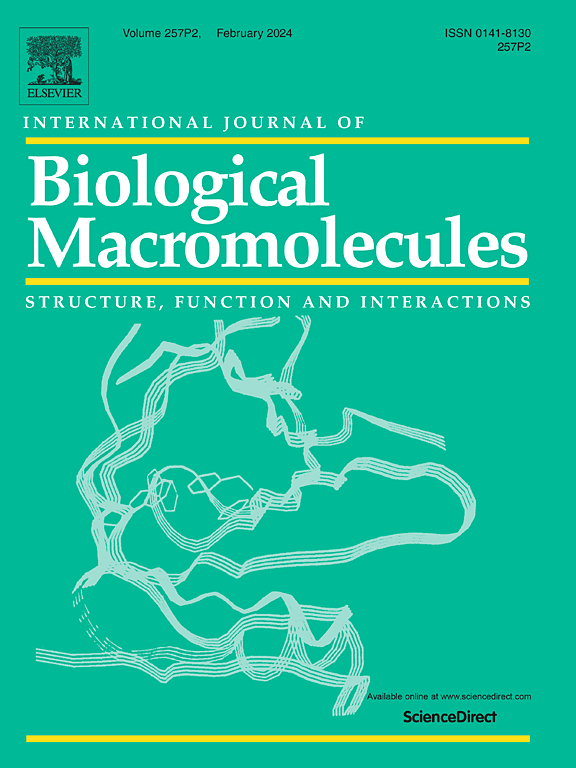Preparation of strong and tough alginate fibers through multiple Ca2+ crosslinking structures and interpenetrating networks
IF 8.5
1区 化学
Q1 BIOCHEMISTRY & MOLECULAR BIOLOGY
International Journal of Biological Macromolecules
Pub Date : 2025-08-09
DOI:10.1016/j.ijbiomac.2025.146726
引用次数: 0
Abstract
Green and low carbon development has become an unstoppable mainstream of the global and forced a trend of developing biomass fibers with high performance. Alginate fiber is an important component of marine biobased fibers that has gained widespread interest recently. However, applications of alginate fiber are facing challenges because of its limited mechanical properties. Here, we developed a novel design to prepare structurally enhanced alginate fibers alginate fiber by constructing multiple Ca2+ crosslinked and interpenetrating networks in alginate chains. Through the synergistic effect of two biocompatible polymers, the entanglement of alginate chains was improved and the viscosity was controlled at a certain level which would not affect the fiber forming. The as-spun alginate fibers without further stretching possess a breaking strength of 265.7 MPa, elongation at break of 19.6 %, outperforming most alginate fibers enhanced by adding reinforcement additives. Improving the intermolecular entanglement to enhance the mechanical properties paves a new way for fabricating high-performance alginate fibers.
通过多种Ca2+交联结构和互穿网络制备强韧海藻酸盐纤维
绿色低碳发展已成为不可阻挡的全球主流,并迫使发展高性能生物质纤维成为一种趋势。海藻酸盐纤维是近年来受到广泛关注的海洋生物基纤维的重要组成部分。然而,由于藻酸盐纤维的力学性能有限,其应用面临着挑战。在这里,我们开发了一种新的设计,通过在藻酸盐链中构建多个Ca2+交联和互穿网络来制备结构增强的藻酸盐纤维。通过两种生物相容性聚合物的协同作用,改善了藻酸盐链的缠结,将黏度控制在不影响纤维形成的一定水平。未经进一步拉伸的海藻酸盐纤维的断裂强度为265.7 MPa,断裂伸长率为19.6%,优于添加增强剂增强的大多数海藻酸盐纤维。通过改善分子间缠结来提高纤维的力学性能,为制备高性能海藻酸盐纤维开辟了新的途径。
本文章由计算机程序翻译,如有差异,请以英文原文为准。
求助全文
约1分钟内获得全文
求助全文
来源期刊
CiteScore
13.70
自引率
9.80%
发文量
2728
审稿时长
64 days
期刊介绍:
The International Journal of Biological Macromolecules is a well-established international journal dedicated to research on the chemical and biological aspects of natural macromolecules. Focusing on proteins, macromolecular carbohydrates, glycoproteins, proteoglycans, lignins, biological poly-acids, and nucleic acids, the journal presents the latest findings in molecular structure, properties, biological activities, interactions, modifications, and functional properties. Papers must offer new and novel insights, encompassing related model systems, structural conformational studies, theoretical developments, and analytical techniques. Each paper is required to primarily focus on at least one named biological macromolecule, reflected in the title, abstract, and text.

 求助内容:
求助内容: 应助结果提醒方式:
应助结果提醒方式:


